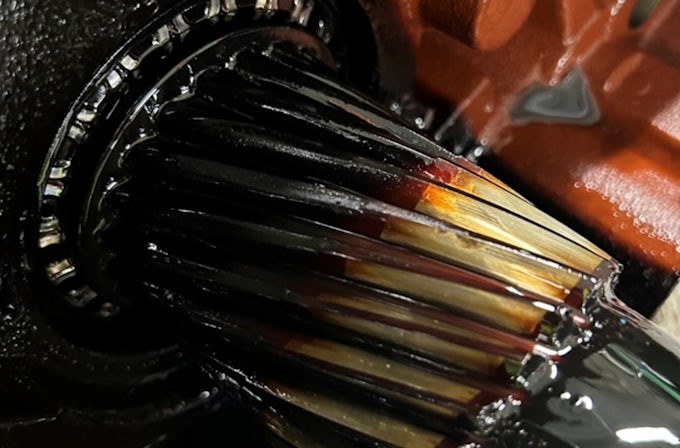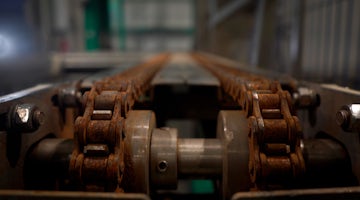What they are, how to tell them apart, and how to prevent lubricant failure
Oxidation and thermal degradation: causes, effects and how to control them
Lubricants age due to chemical and thermal influences. Oxidation and thermal degradation are often mentioned in the same breath, but they are fundamentally different, and require a different approach. Here we explain what each process is, how to recognise it and how to keep your lubricants performing at their best.
Oxidation: reaction with oxygen
Oxidation is a chemical reaction between the lubricant and oxygen, causing the oil or grease to age gradually. The process is accelerated by high temperatures, pressure, metallic catalysts (such as copper or iron particles) and contamination.
What happens?
- The oil or grease darkens
- Viscosity increases
- Acids and by-products form
- Sludge or varnish may appear
Oxidation is relatively gradual but over time it can severely impair the lubricant’s performance and even lead to corrosion.

Thermal degradation
Thermal degradation: breakdown from heat
Thermal degradation occurs when the temperature becomes so high that the lubricant molecules themselves break apart. This happens without oxygen being involved.
What happens?
- The lubricant carbonises, leaving hard black deposits
- Lubricating properties disappear almost immediately
- Solid residues stick to surfaces and can block components
Thermal degradation is often localised and rapid, developing at ‘hot spots’ such as heavily loaded bearings or gears.
How to tell the difference
| Feature | Oxidation | Thermal degradation |
|---|---|---|
| Cause | Reaction with oxygen | Molecules break from heat |
| Speed | Gradual, progressive | Sudden, localised |
| Appearance | Dark, sticky, sludge | Hard, black deposits |
| Location | Throughout the system | On or near hot surfaces |
| Effect | Corrosion, blocked channels | Solid residues, seized parts |
How to prevent oxidation and thermal degradation
- Choose a lubricant designed to resist high temperatures and oxidation
- Keep the system clean and free from catalytic metals and dirt
- Avoid overloading and hot spots through proper maintenance and inspection
- Replace lubricants in time and monitor their condition
- Store and handle lubricants correctly to prevent contamination and premature ageing
The MicPol® technology in Interflon lubricants helps limit the effects of both processes: the strong lubricating film reduces friction and heat build-up and lowers the risk of oxidation by ensuring stable performance and less downtime.
Conclusion
With the right knowledge and approach you can prevent premature ageing of your lubricants and protect your machines against unnecessary wear and failures. By preventing oxidation and thermal degradation, lubricants can maintain their protective properties longer. That means smoother operation, fewer breakdowns and longer machine life.
Questions or need advice? Please contact us, our specialists are happy to help with no obligation.
Author: Janneke van der Pol, MLT1
Frequently Asked Questions
Signs of oxidation include darkened oil, increased viscosity, sludge or varnish deposits, and unusual odours. Thermal degradation often leaves hard, black carbon-like residues on hot surfaces and can cause parts to seize.
Oxidation is a slow chemical reaction with oxygen, producing acids and sticky deposits (varnish and sludge). Thermal degradation happens when oil molecules break apart from extreme heat, producing hard carbon deposits without oxygen involvement.
Use high-quality lubricants with excellent oxidation stability, avoid overloading and hot spots, keep the system clean, monitor oil condition regularly, and replace oil before critical limits are reached.

